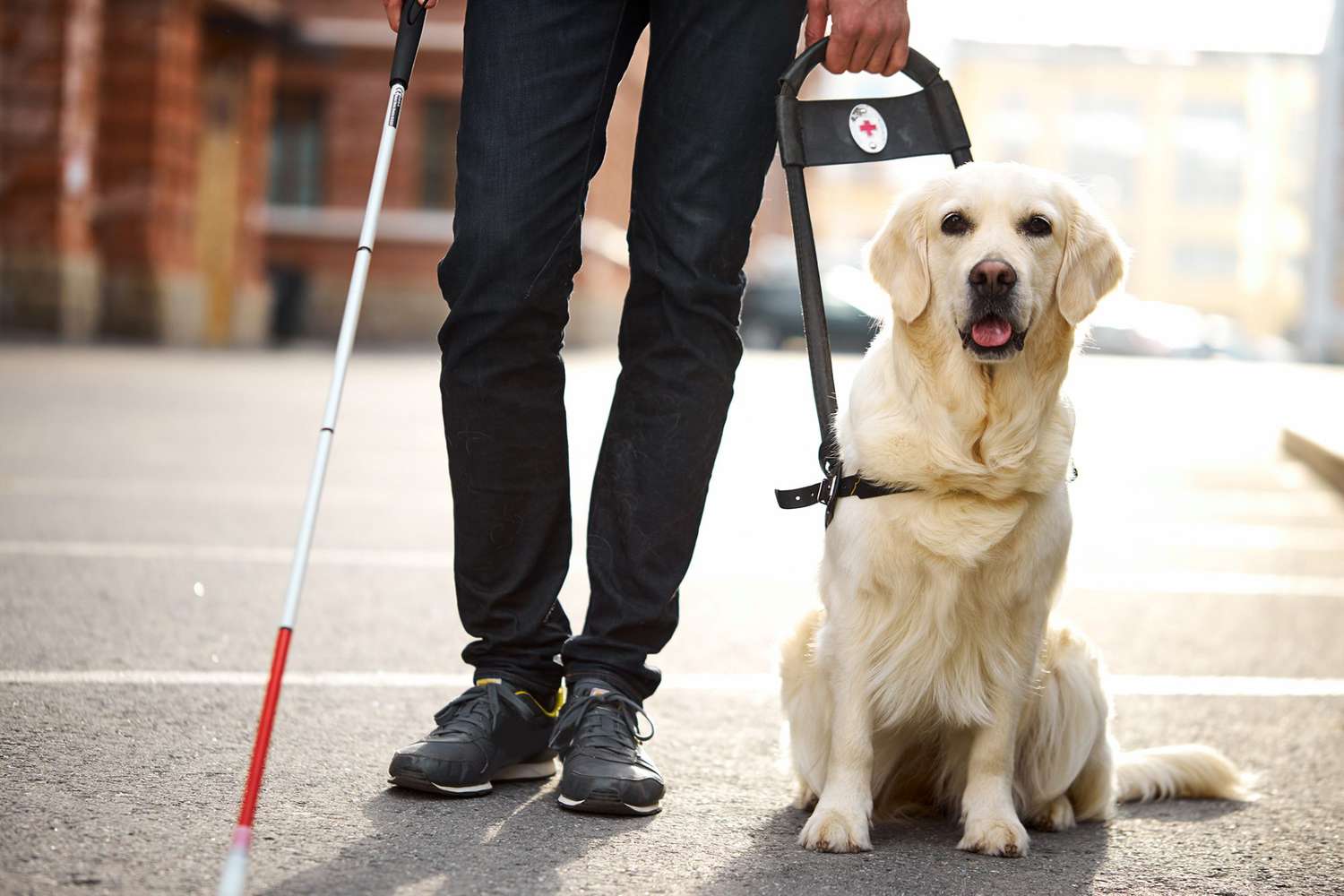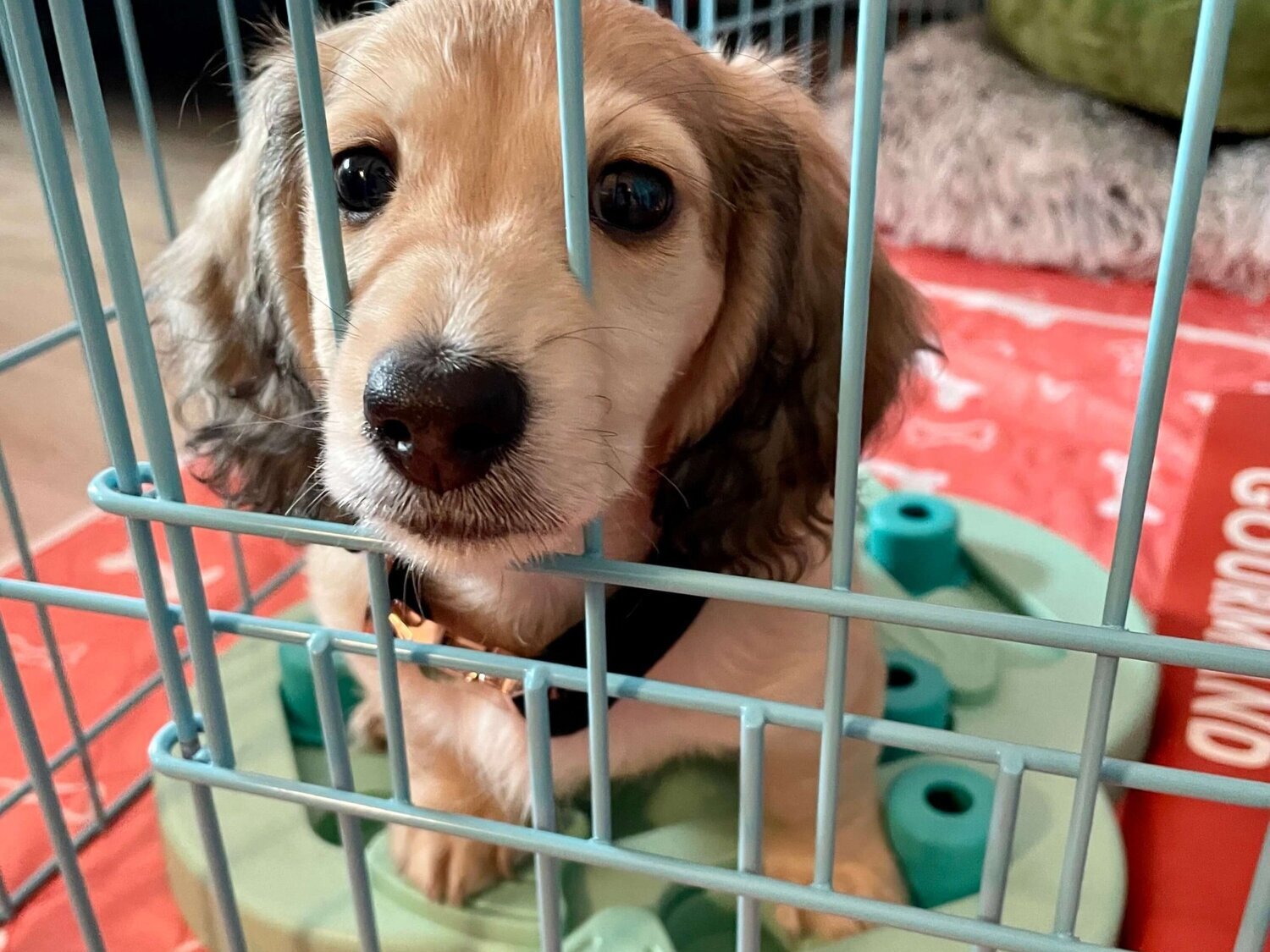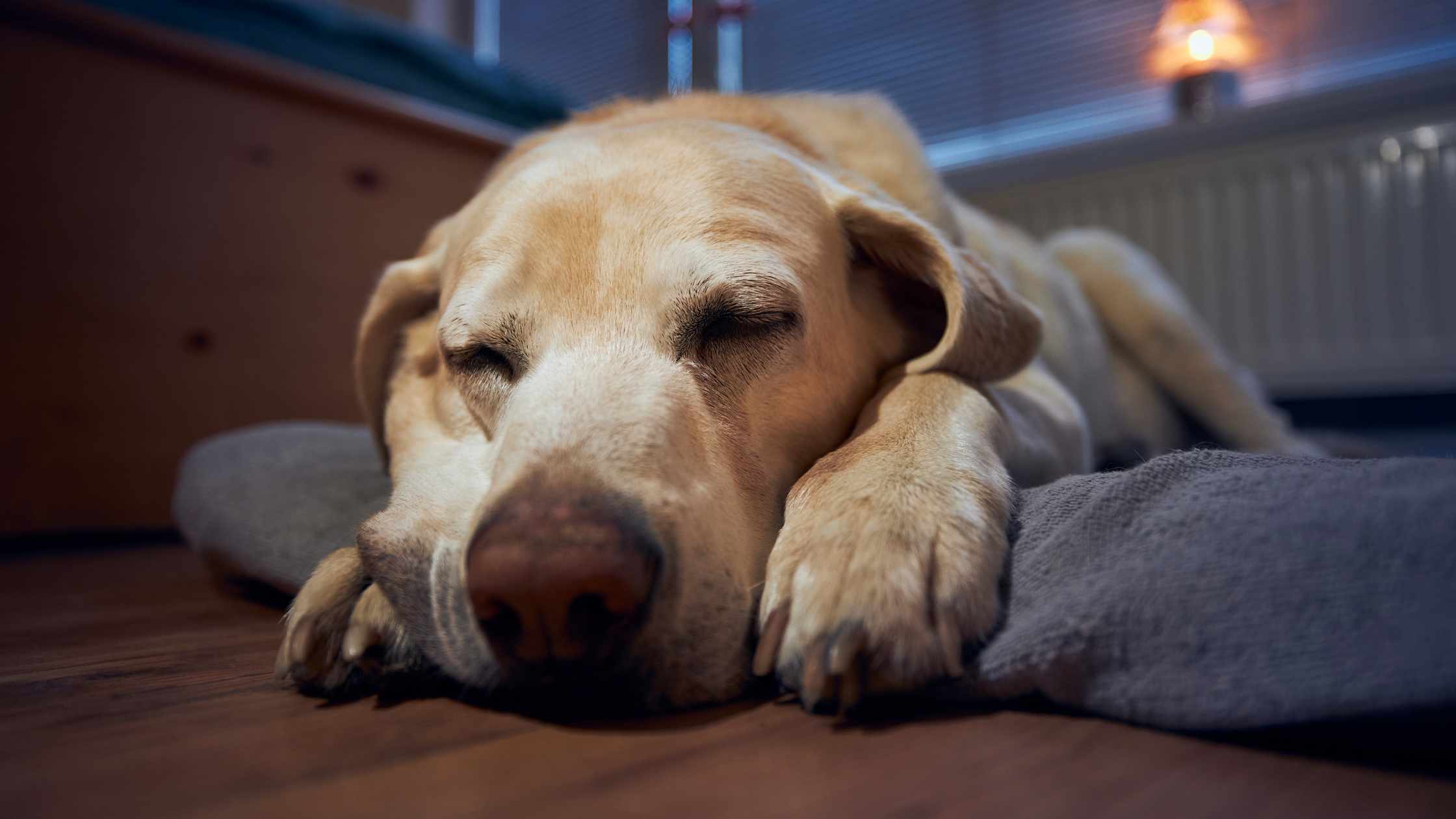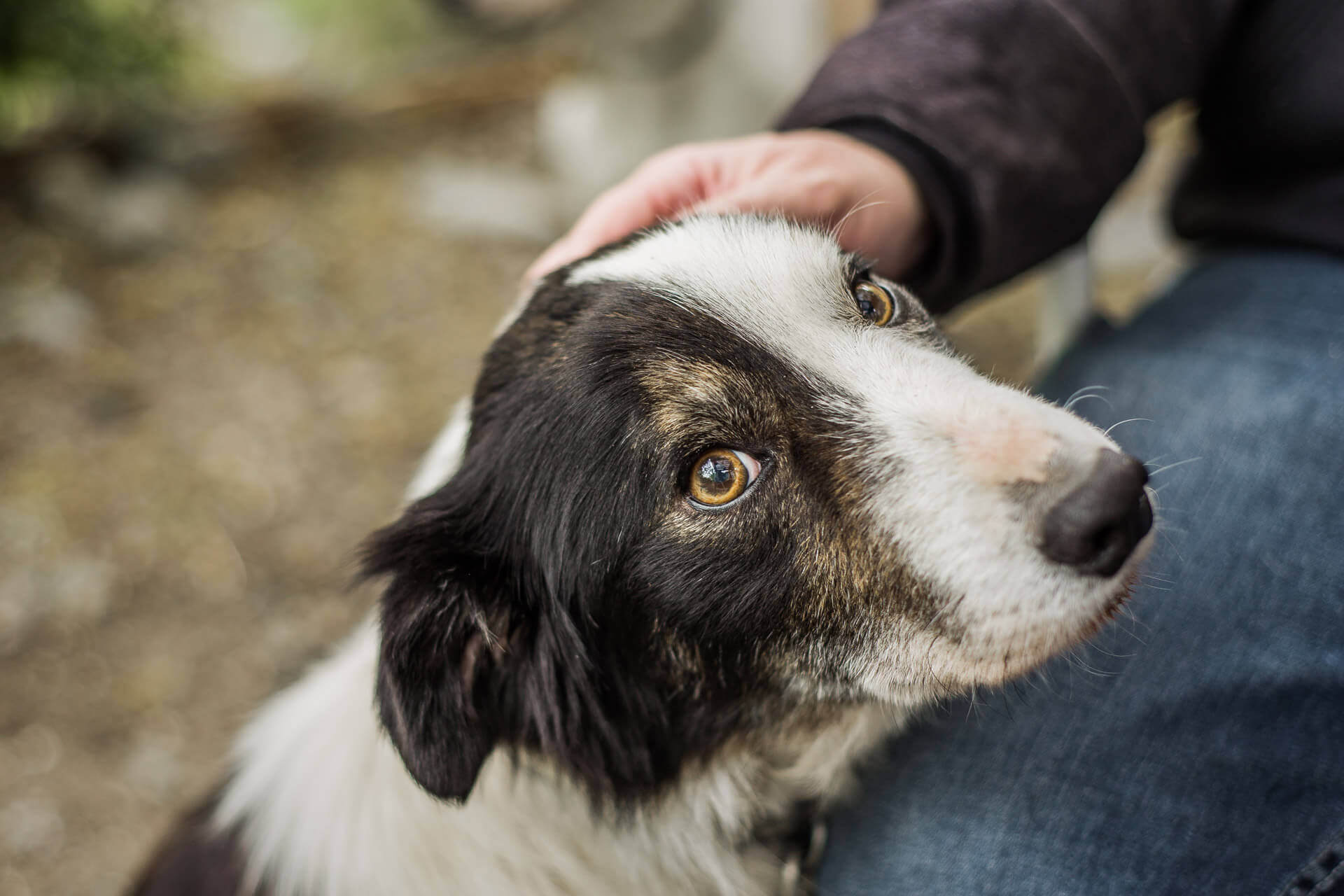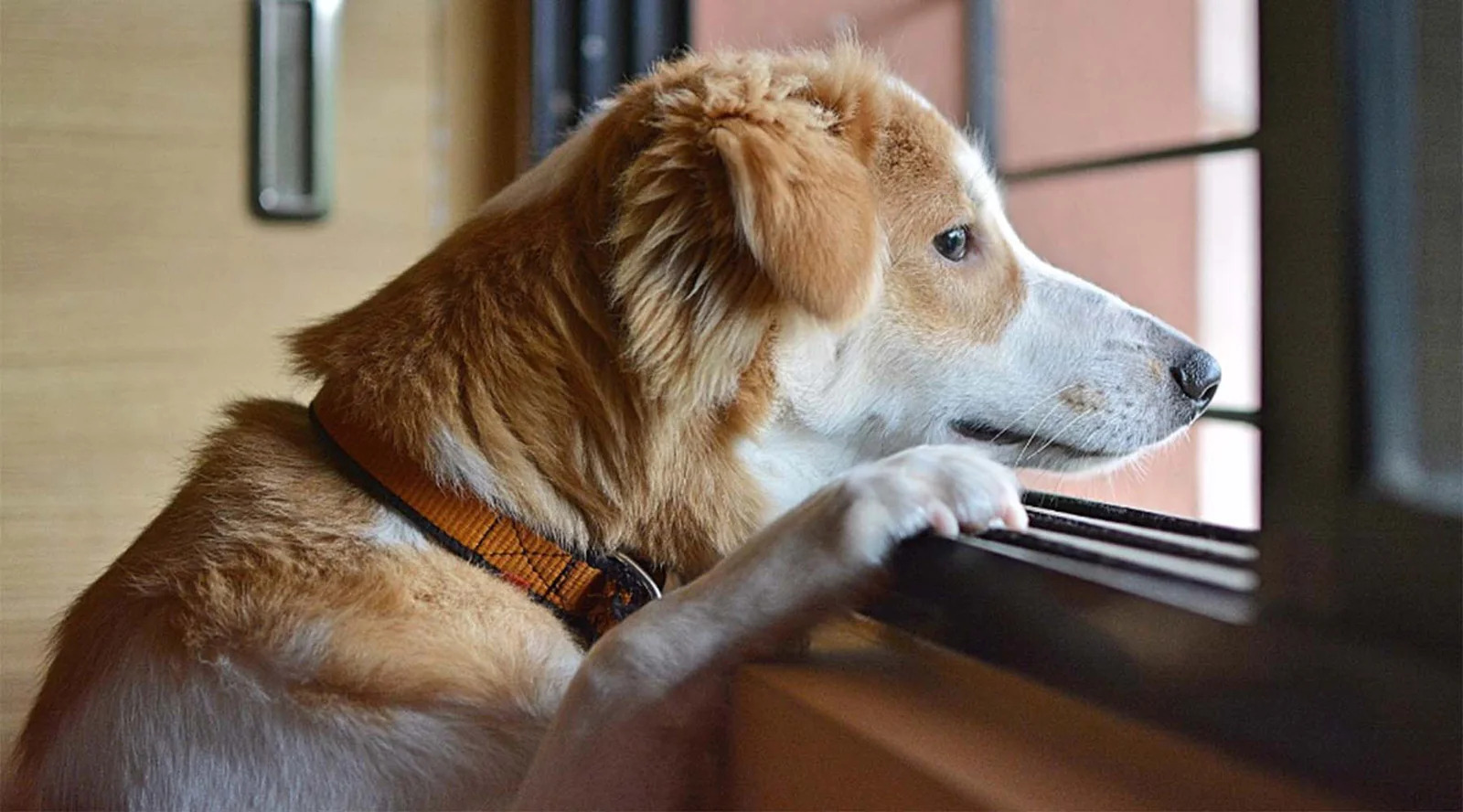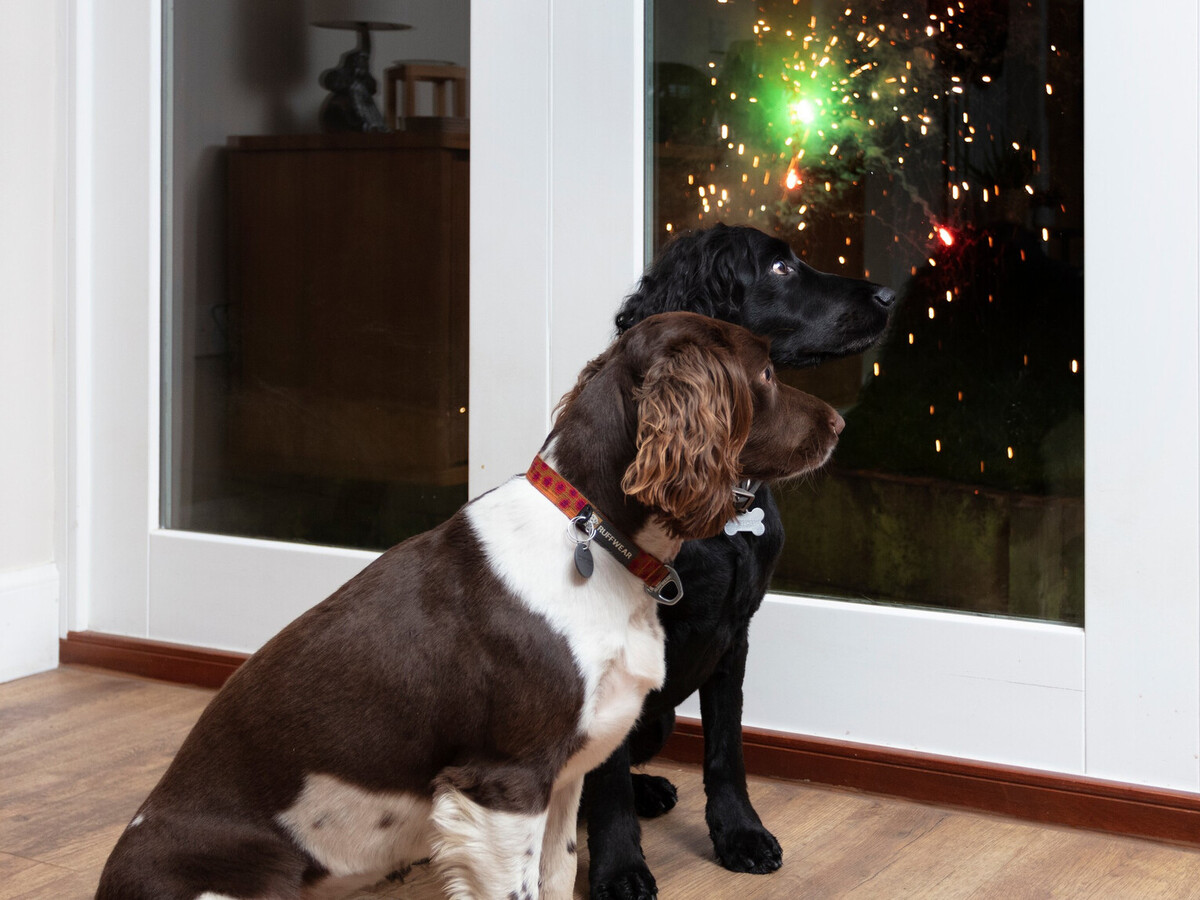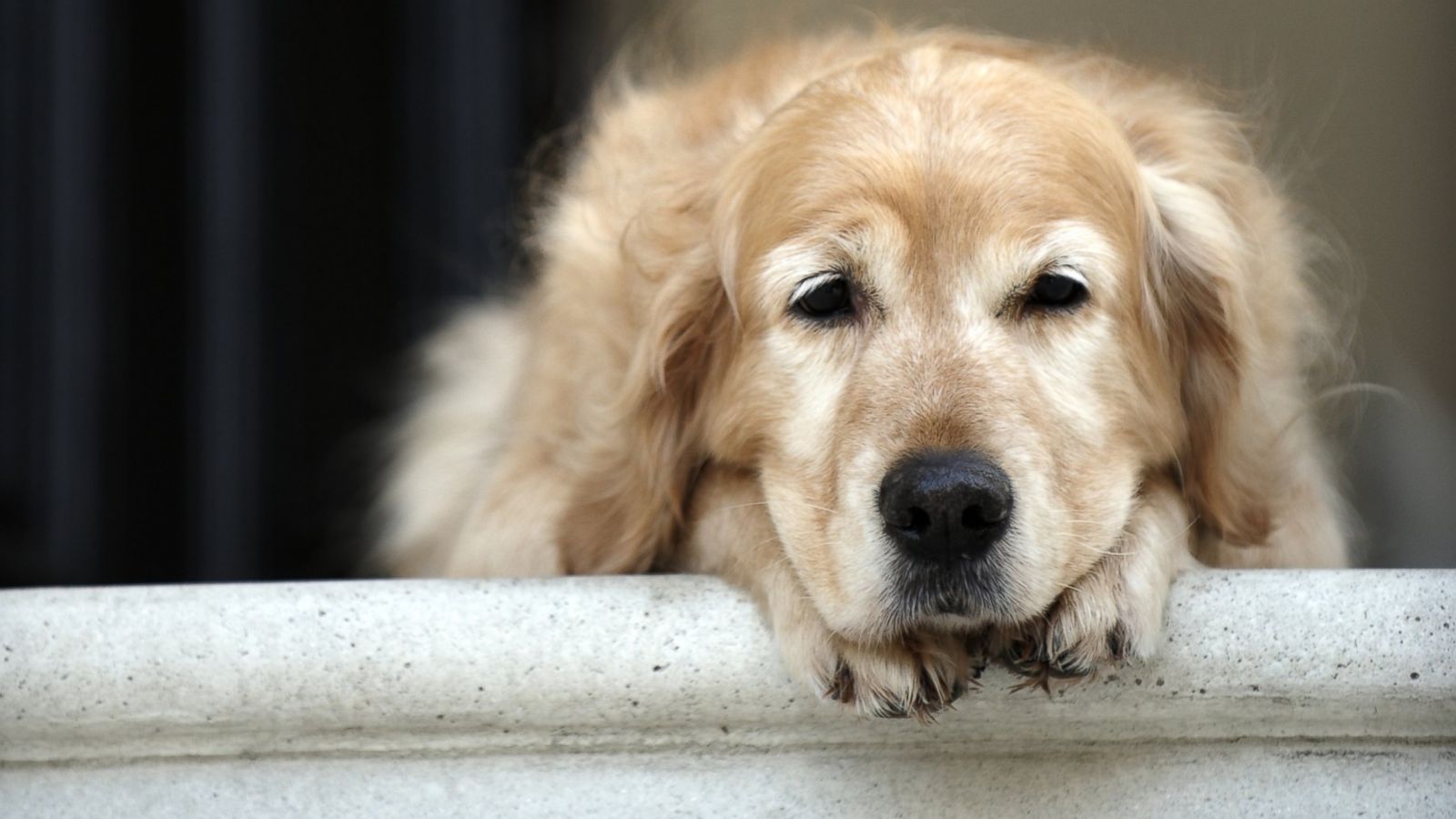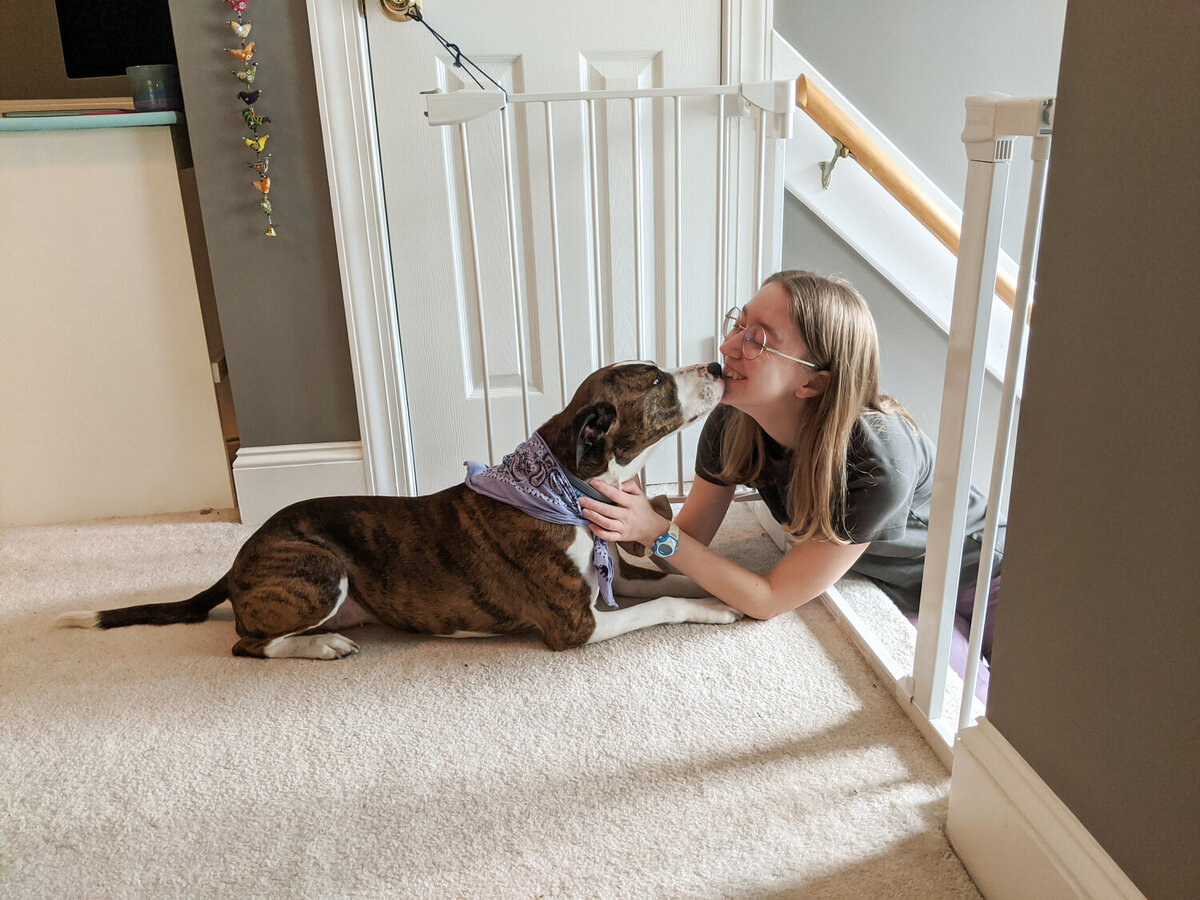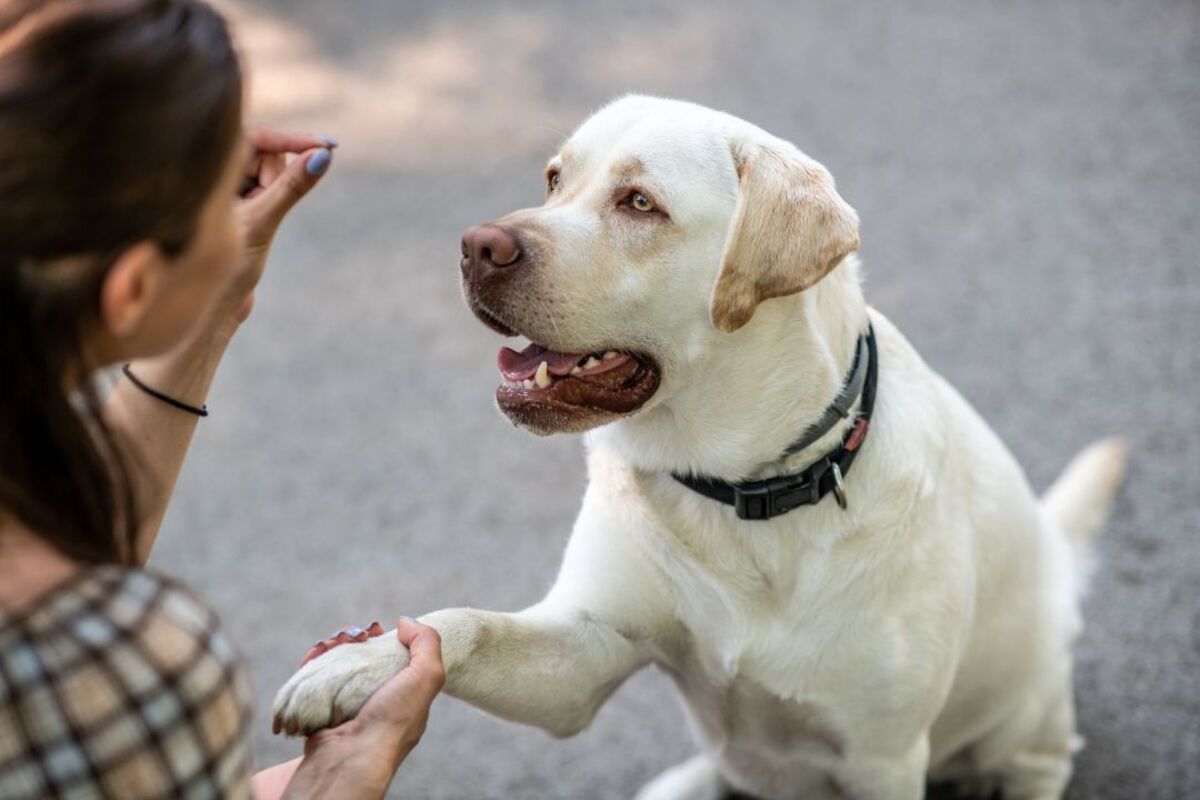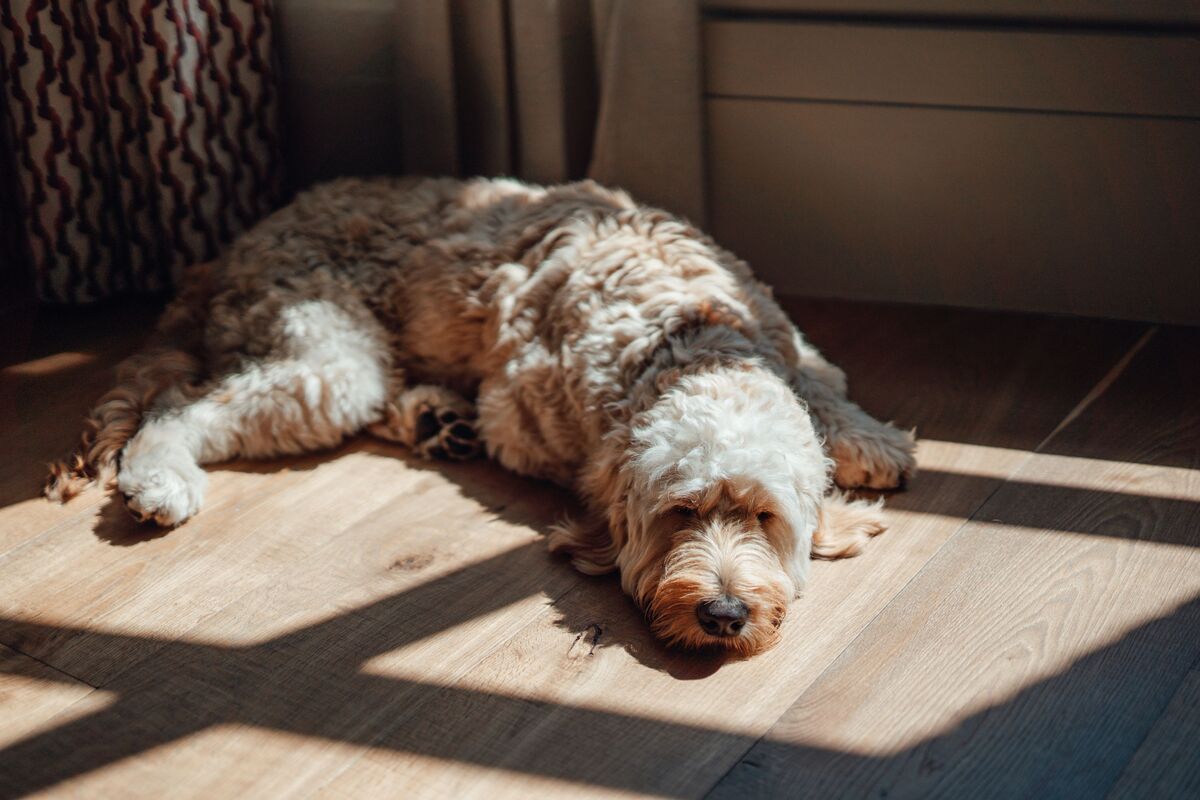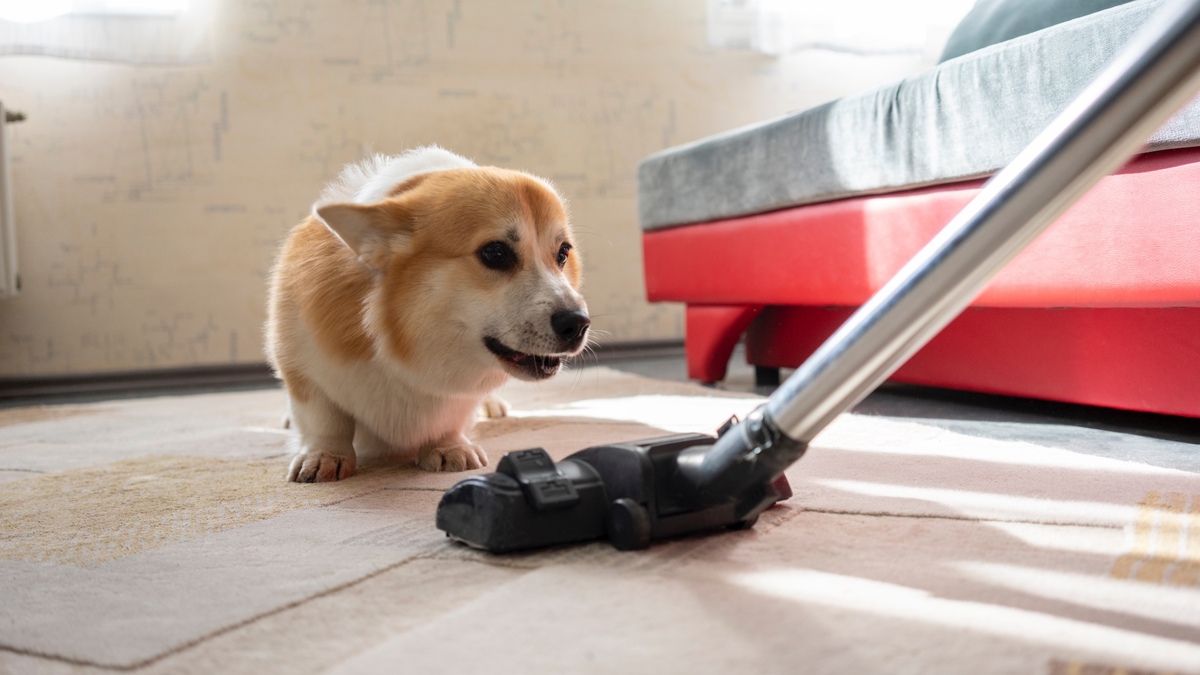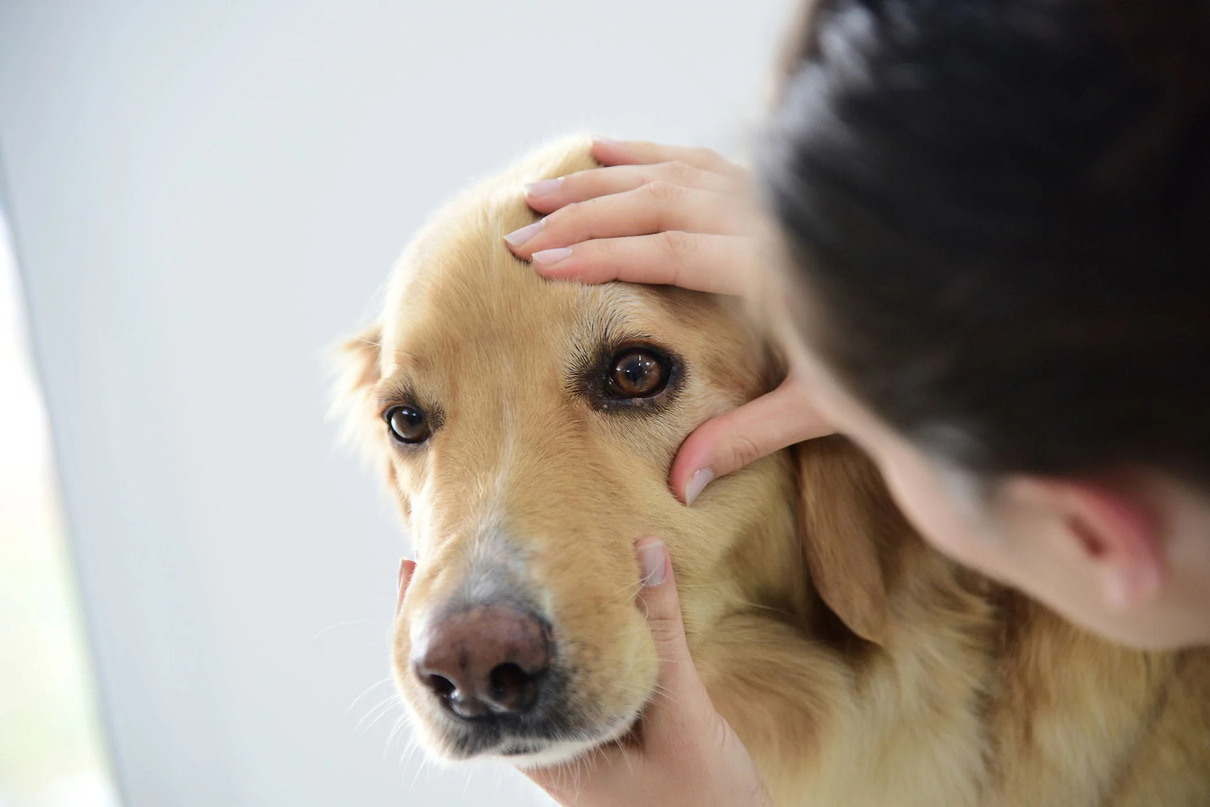Home>Health & Wellness>Behavior & Cognitive Care>How To Help Your Dog With Storm Anxiety
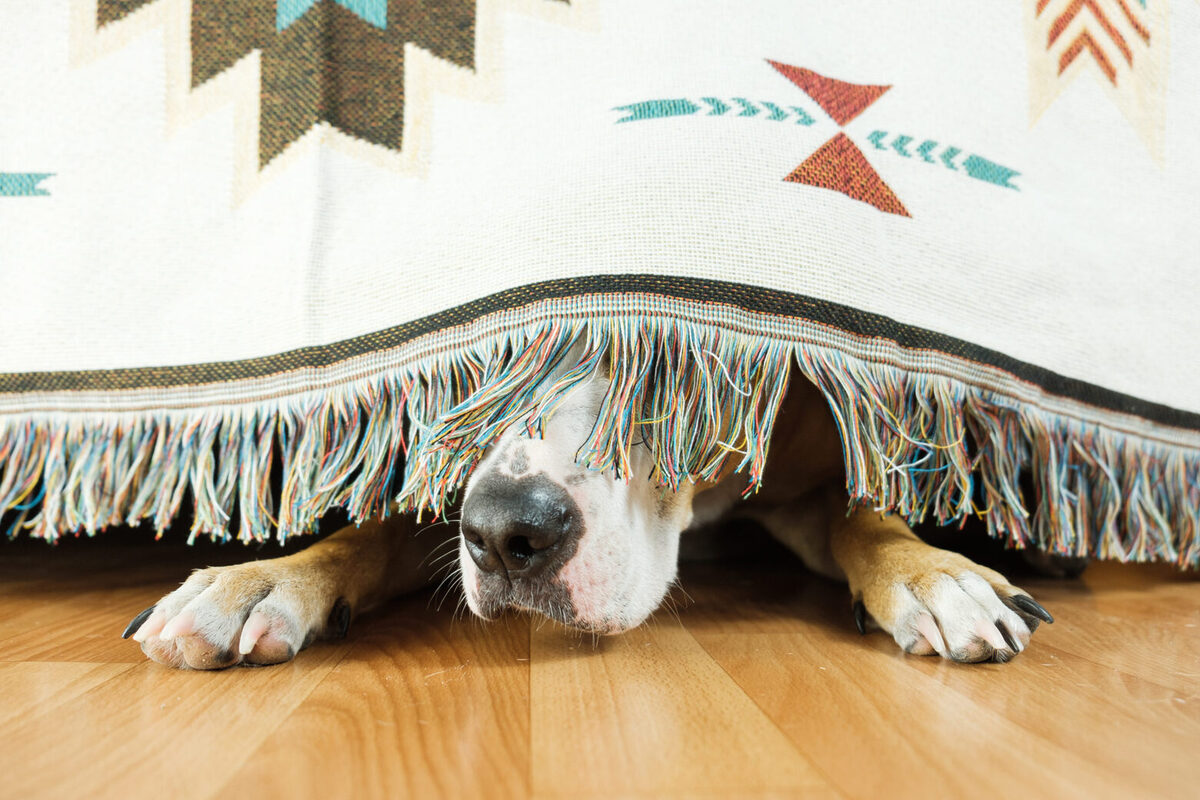

Behavior & Cognitive Care
How To Help Your Dog With Storm Anxiety
Published: January 30, 2024
Learn effective strategies to help your dog cope with storm anxiety. Explore behavior and cognitive care techniques to provide comfort and support.
(Many of the links in this article redirect to a specific reviewed product. Your purchase of these products through affiliate links helps to generate commission for Pawsomeoldies.com, at no extra cost. Learn more)
Table of Contents
Understanding Storm Anxiety in Dogs
Storm anxiety, also known as thunderstorm phobia, is a common issue that affects many dogs. This condition is characterized by an intense fear and anxiety response to thunderstorms and other loud noises associated with storms, such as lightning and strong winds. Dogs experiencing storm anxiety may exhibit a range of distressing behaviors, including trembling, panting, pacing, whining, hiding, and seeking excessive reassurance from their owners.
The fear of storms in dogs can be attributed to a combination of factors, including the loud noises, changes in barometric pressure, static electricity, and the darkening sky associated with approaching storms. Additionally, dogs have keen senses and may be more sensitive to the sensory stimuli associated with storms, making them more susceptible to experiencing anxiety during these events.
It's important to recognize that storm anxiety in dogs is a genuine and distressing condition that can significantly impact their well-being. Understanding the underlying causes and manifestations of storm anxiety is crucial for developing effective strategies to help dogs cope with their fear and anxiety during storms.
By acknowledging the distressing nature of storm anxiety in dogs, pet owners can take proactive steps to support their furry companions and alleviate their distress during stormy weather.
Read more: How To Help Dogs With Anxiety At Night
Signs and Symptoms of Storm Anxiety
Storm anxiety in dogs can manifest in various ways, and recognizing the signs and symptoms is crucial for providing appropriate support and intervention. When a storm approaches, dogs with storm anxiety may exhibit a range of distressing behaviors and physical symptoms. These signs can be indicative of their heightened fear and discomfort during stormy weather.
Behavioral Signs:
- Pacing and Restlessness: Dogs may exhibit pacing behavior, appearing agitated and unable to settle in one place.
- Excessive Panting and Drooling: Anxious dogs may pant heavily and drool excessively, displaying physical signs of distress.
- Hiding or Seeking Shelter: Dogs may seek refuge in secluded areas such as closets, under beds, or in small, enclosed spaces in an attempt to find safety and security.
- Excessive Whining or Barking: Some dogs vocalize their distress through persistent whining, barking, or howling as a response to the storm-related stimuli.
- Destructive Behavior: In extreme cases, dogs may engage in destructive behavior, such as chewing furniture or attempting to escape from the home in a frantic attempt to flee from the perceived threat.
Physical Symptoms:
- Trembling and Shaking: Dogs may tremble and shake uncontrollably due to the overwhelming fear and anxiety triggered by the storm.
- Pupil Dilation: Dilated pupils can indicate heightened arousal and stress in dogs experiencing storm anxiety.
- Excessive Salivation: Increased salivation is a common physical response to stress and anxiety in dogs.
- Refusal to Eat: Some dogs may lose their appetite during storms, demonstrating a reluctance to eat or drink due to their heightened emotional state.
Seeking Reassurance:
- Clamoring for Attention: Dogs may seek constant reassurance and comfort from their owners, often seeking physical contact and proximity during the storm.
- Attachment Behavior: Dogs may display clingy behavior, staying close to their owners and displaying signs of dependency during the storm.
Recognizing these signs and symptoms of storm anxiety in dogs is essential for implementing effective strategies to help them cope with their fear and discomfort during stormy weather. By understanding these manifestations, pet owners can provide the necessary support and create a safe environment to help their dogs navigate through the challenges posed by storm anxiety.
Read more: How To Help Aggressive Anxiety In Dogs
Tips for Creating a Safe Space for Your Dog During Storms
Creating a safe and comforting environment for your dog during storms is essential for helping them cope with their anxiety and fear. By implementing the following tips, you can provide a secure and reassuring space that supports your dog through the challenges of stormy weather.
-
Designate a Safe Retreat: Identify a quiet and secure area in your home where your dog can seek refuge during storms. This space should be away from windows and exterior walls to minimize exposure to the sights and sounds of the storm. A cozy corner in a room or a designated crate can serve as an ideal retreat for your dog.
-
Provide Comforting Items: Furnish the safe space with familiar and comforting items that offer a sense of security to your dog. This may include their favorite blanket, toys, or an article of clothing with your scent. These familiar objects can help alleviate their anxiety and provide a source of comfort during the storm.
-
Create White Noise: Introduce soothing background noise, such as calming music or white noise, to mask the sounds of the storm. This can help reduce the impact of thunder and lightning sounds, creating a more tranquil environment for your dog.
-
Use Calming Pheromones: Consider using pheromone diffusers or sprays designed to promote relaxation in dogs. These products release synthetic pheromones that mimic those produced by nursing mother dogs, helping to create a calming atmosphere and reduce anxiety in your pet.
-
Stay Calm and Reassuring: Your demeanor and behavior during storms can significantly influence your dog's response. Remain calm and composed, offering reassurance and comfort to your dog. Your soothing presence can provide a sense of security and stability, helping to alleviate their distress.
-
Practice Desensitization: Gradually acclimate your dog to storm-related stimuli by incorporating desensitization techniques. This may involve playing recordings of storm sounds at a low volume while engaging in positive activities with your dog. Over time, gradually increase the volume to help your dog become more accustomed to storm-related noises.
-
Seek Professional Guidance: In severe cases of storm anxiety, consult with a veterinarian or a certified animal behaviorist for professional guidance. They can provide tailored strategies and, if necessary, recommend anxiety-reducing medications to help manage your dog's storm-related anxiety.
By implementing these tips, you can create a safe and supportive space for your dog during storms, helping them feel secure and comforted amidst the challenges posed by storm anxiety. Your proactive approach and thoughtful interventions can make a significant difference in alleviating your dog's distress and promoting their well-being during stormy weather.
Using Positive Reinforcement to Help Your Dog Overcome Storm Anxiety
Positive reinforcement is a powerful and effective tool for helping dogs overcome storm anxiety. By utilizing positive reinforcement techniques, pet owners can actively support their dogs in developing more positive associations with storm-related stimuli, ultimately reducing their fear and anxiety during stormy weather.
One of the key strategies in using positive reinforcement involves creating a calm and reassuring environment for your dog during storms. This can be achieved by remaining composed and offering gentle reassurance to your pet. Your soothing presence can serve as a source of comfort, conveying a sense of security to your dog amidst the unsettling sounds and sights of a storm. Additionally, providing physical affection, such as gentle petting and comforting touches, can further reinforce a positive emotional state in your dog, helping them feel more at ease during stormy weather.
Incorporating desensitization techniques alongside positive reinforcement can also be highly beneficial. This involves gradually exposing your dog to storm-related stimuli in a controlled and positive manner. For instance, playing recordings of storm sounds at a low volume while engaging in enjoyable activities with your dog can help them associate these sounds with positive experiences. Over time, the volume can be gradually increased as your dog becomes more accustomed to the noises associated with storms. By pairing these experiences with positive reinforcement, such as treats, praise, and play, you can help your dog build a more positive and resilient response to storm-related stimuli.
Furthermore, creating a safe retreat for your dog during storms and using positive reinforcement within that space can significantly aid in their emotional well-being. By providing comforting items, such as their favorite toys or blankets, and incorporating positive experiences, such as interactive play or rewarding activities, within the safe space, you can reinforce a sense of security and comfort for your dog. This can help them associate the designated retreat with positive emotions, serving as a sanctuary during stormy weather.
Consistency and patience are paramount when utilizing positive reinforcement to help your dog overcome storm anxiety. By consistently applying positive reinforcement techniques and patiently guiding your dog through the process, you can gradually help them develop more adaptive responses to storms. It's important to celebrate small victories and progress, acknowledging and reinforcing your dog's positive behaviors and reactions during stormy weather.
In summary, positive reinforcement serves as a compassionate and effective approach to help dogs overcome storm anxiety. By creating a supportive environment, incorporating desensitization techniques, and reinforcing positive associations, pet owners can play a pivotal role in helping their dogs build resilience and reduce their fear and anxiety during stormy weather. Through patience, understanding, and the consistent application of positive reinforcement, pet owners can make a meaningful difference in supporting their dogs through the challenges of storm anxiety.
Seeking Professional Help for Severe Cases of Storm Anxiety
In instances where a dog's storm anxiety significantly impairs their well-being and quality of life, seeking professional help is crucial for addressing severe cases of storm anxiety. Professional guidance from veterinarians, certified animal behaviorists, or veterinary behaviorists can provide tailored strategies and interventions to support dogs with debilitating storm anxiety.
Veterinarians play a pivotal role in evaluating the physical and emotional health of dogs exhibiting severe storm anxiety. Through comprehensive assessments, veterinarians can rule out any underlying medical conditions that may contribute to or exacerbate the dog's anxiety. Additionally, they can offer valuable insights into the potential impact of storm anxiety on the dog's overall health and behavior, guiding pet owners in making informed decisions regarding their pet's well-being.
Certified animal behaviorists possess specialized knowledge in understanding and addressing complex behavioral issues in animals, including severe anxiety disorders. These professionals can conduct in-depth behavioral assessments to gain a thorough understanding of the dog's specific triggers, responses, and coping mechanisms during stormy weather. By analyzing the dog's behavior patterns and emotional responses, certified animal behaviorists can develop personalized behavior modification plans tailored to the individual needs of the dog.
In cases where advanced expertise is required, veterinary behaviorists, who are board-certified specialists in veterinary behavior, can offer specialized support for dogs with severe storm anxiety. Veterinary behaviorists are equipped to design multifaceted treatment plans that may encompass behavior modification techniques, environmental management strategies, and, if necessary, the judicious use of anxiety-reducing medications. Their in-depth understanding of animal behavior and psychopharmacology enables them to provide comprehensive and integrated approaches to managing severe storm anxiety in dogs.
Professional interventions for severe storm anxiety may encompass a range of strategies, including desensitization and counterconditioning protocols, environmental modifications, and the implementation of anxiety-reducing medications when deemed appropriate. These interventions are tailored to address the specific needs and sensitivities of the affected dog, aiming to alleviate their distress and enhance their overall well-being during stormy weather.
By seeking professional help for severe cases of storm anxiety, pet owners can access expert guidance, evidence-based interventions, and compassionate support for their distressed dogs. Through collaborative efforts with veterinary professionals and certified behavior specialists, pet owners can navigate the complexities of severe storm anxiety and work towards improving their dog's emotional resilience and quality of life.
In summary, professional help for severe cases of storm anxiety offers a comprehensive and specialized approach to addressing the complex needs of dogs experiencing debilitating anxiety during storms. Through the expertise and guidance of veterinary professionals and certified behavior specialists, pet owners can take proactive steps to support their dogs and provide them with the necessary care and interventions to alleviate their distress.
